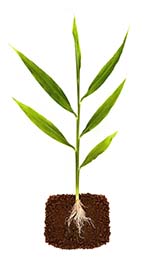 Massage is probably one of the most effective methods of aromatherapy, combining the therapeutic benefits of massage therapy with those offered by essential oils. If you’re interested in exploring essential oils for massages in aromatherapy, there are a few things you need to know to make sure your essential oil experience is safe, pleasant, and most of all, effective.
Massage is probably one of the most effective methods of aromatherapy, combining the therapeutic benefits of massage therapy with those offered by essential oils. If you’re interested in exploring essential oils for massages in aromatherapy, there are a few things you need to know to make sure your essential oil experience is safe, pleasant, and most of all, effective.
The term “massage” refers to a number of different therapies involving the manual manipulation of soft tissues such as the skin and muscles to produce a therapeutic effect, such as pain reduction. In aromatherapy massage, the massage strokes themselves may be very light; the goal is to facilitate the penetration of essential oils into the skin and deeper tissues. People can and often do self-massage with essential oils that target specific problems: rubbing a bit of lavender oil onto the temples to treat a headache is a simple example of massage aromatherapy.
The first rule when using essential oils for massages is to know which essential oils are appropriate for massage and which aren’t. A few essential oils are never used in massage because they contain ingredients that can be toxic in large doses, or that are strongly irritating to the skin. Essential oils that should not be used in massages include cassia, cinnamon bark, mugwort, pennyroyal, wintergreen, and wormwood oils.
Some essential oils that carry some risk of sensitization may still be used sparingly and with care in massages. Examples of potentially sensitizing oils are clove bud, fennel, fir needle, oakmoss, oregano, palmarosa, pine needle, thyme, and verbena essential oils. A small number of oils—primarily citrus oils—also have the potential to be phototoxic or photosensitizing, meaning that they create dermal irritation when skin is exposed to sunlight after application. Photosensitizing oils include angelica, bergamot, blood orange, bitter orange, grapefruit, lemon, lime, and tangerine oils.
Though opinions differ among aromatherapy practitioners, the general rule for using essential oils in massages is to dilute the full-strength oils in a carrier oil. When diluting an essential oil in a carrier oil, the ratio is approximately 12 drops of essential oil to 30 mL or 1 fluid ounce of a carrier oil base. If you’re using multiple essential oils in a massage blend, remember that the ratio is 12 drops total of essential oil to carrier oil, so you’ll only need to add a few drops of each essential oil in the blend. Please note that this is an adult dose; for guidelines on using essential oils with children, you should consult a knowledgeable health care practitioner.
Carrier oils are usually nut, seed, or vegetable-based oils such as sweet almond, apricot kernel, avocado, grapeseed, jojoba, wheat germ, or olive oil. Many of these carrier oils are high in nutrients such as vitamin E (sweet almond and wheat germ oils) and vitamins A, C and B-complex (avocado oil), giving them moisturizing and nourishing benefits for the skin all on their own.
Most nonsensitizing essential oils can be used in massages. However, there are definitely some oils that stand apart for their therapeutic benefits when added to a massage blend. Below, we’ve listed some of the most popular essential oils for massages to give you something to get started with:
Rosemary Essential Oil: Rosemary oil is used in massages to treat sore muscles and joints as well as headaches and migraines [1]. Some aromatherapists employ it as a skin tonic to fight cellulite, especially in the thigh region [2].
Lavender Essential Oil: Lavender oil has a calming effect on the nerves and is often applied in minute quantities to the temples to reduce headaches [3]. As a skin salve, lavender oil is helpful in the treatment of minor cuts, insect bites and burns [3].
Peppermint Essential Oil: Due to its high concentration of menthol, peppermint oil has a cooling and numbing effect on the body and is commonly used to treat irritated or inflamed skin [4]. A massage with peppermint oil may also improve circulation, suppress nausea, and stimulate digestion [5].
Clary Sage Essential Oil: Clary sage oil is a well-known antispasmodic that is often used to soothe cramps and painful menstruation [6]. The oil may also help regulate skin secretions [6], and its sweet, herbaceous scent brings joy to anyone who smells it.
Along with classic massage, another technique to maximize the therapeutic effect of essential oils is to use a hot compress: this method uses heat and moisture to drive essential oils deeper into the target area of the body for greater effect. To make a hot compress, you should first apply a carrier oil to the area of the body you want to treat, and then add a few drops of your essential oil or oil blend. A helpful blend for cramps can be made by combining clary sage, marjoram, geranium, lavender, and cypress oils. Wet a towel with hot tap water, place it overtop the treated area, then place a dry towel overtop. Lie down with the hot compress in place for 15 to 20 minutes and you should experience noticeable relief.
REFERENCES
1. “Rosemary Herb Oil Medicinal Uses and Benefits”. Annie’s Remedy. Accessed May 21st, 2014. http://www.anniesremedy.com/herb_detail51.php.
2. “Natural Ways to Remove Cellulite”. Livestrong. Last modified March 12th, 2014. http://www.livestrong.com/article/179423-natural-ways-to-remove-cellulite/.
3. “What are the health benefits of lavender?” Medical News Today. Last modified September 10th, 2013. http://www.medicalnewstoday.com/articles/265922.php.
4. “Peppermint.” University of Maryland Medical Center. Last modified May 7th, 2013. https://umm.edu/health/medical/altmed/herb/peppermint.
5. “The Essential: 6 Uses for Peppermint Oil”. June 4th, 2013. Mighty Nest Blog: Living a Healthy, Engaged and Mindful Life. http://mightynest.com/blog/the-essential-6-uses-for-peppermint-essential-oil.
6. Keville, Kathy. April 30th, 2007. “Aromatherapy: Clary Sage”. HowStuffWorks. http://health.howstuffworks.com/wellness/natural-medicine/aromatherapy/aromatherapy-clarysage.htm.

